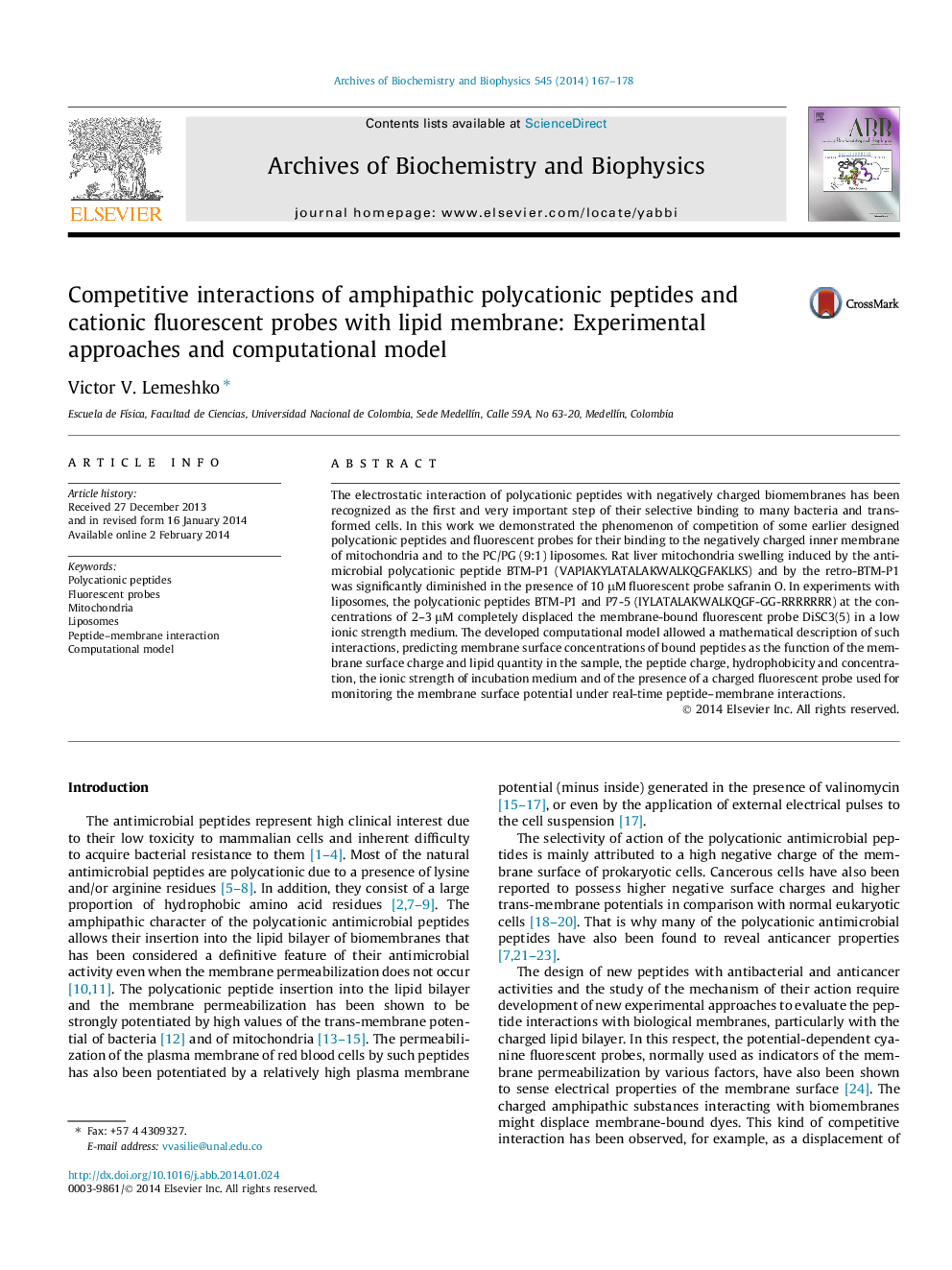| Article ID | Journal | Published Year | Pages | File Type |
|---|---|---|---|---|
| 1925265 | Archives of Biochemistry and Biophysics | 2014 | 12 Pages |
•Safranin O decreases mitochondria permeabilization by polycationic peptides.•Polycationic peptides displace the liposome-bound cationic fluorescent probe DiSC3(5).•High ionic strength decreases the displacement effect.•Computational model of the peptide and fluorescent probe interactions with membranes.•Peptide hydrophobicity and net charge for selective binding to electronegative membrane.
The electrostatic interaction of polycationic peptides with negatively charged biomembranes has been recognized as the first and very important step of their selective binding to many bacteria and transformed cells. In this work we demonstrated the phenomenon of competition of some earlier designed polycationic peptides and fluorescent probes for their binding to the negatively charged inner membrane of mitochondria and to the PC/PG (9:1) liposomes. Rat liver mitochondria swelling induced by the antimicrobial polycationic peptide BTM-P1 (VAPIAKYLATALAKWALKQGFAKLKS) and by the retro-BTM-P1 was significantly diminished in the presence of 10 μM fluorescent probe safranin O. In experiments with liposomes, the polycationic peptides BTM-P1 and P7-5 (IYLATALAKWALKQGF-GG-RRRRRRR) at the concentrations of 2–3 μM completely displaced the membrane-bound fluorescent probe DiSC3(5) in a low ionic strength medium. The developed computational model allowed a mathematical description of such interactions, predicting membrane surface concentrations of bound peptides as the function of the membrane surface charge and lipid quantity in the sample, the peptide charge, hydrophobicity and concentration, the ionic strength of incubation medium and of the presence of a charged fluorescent probe used for monitoring the membrane surface potential under real-time peptide–membrane interactions.
Graphical abstractFigure optionsDownload full-size imageDownload high-quality image (124 K)Download as PowerPoint slide
